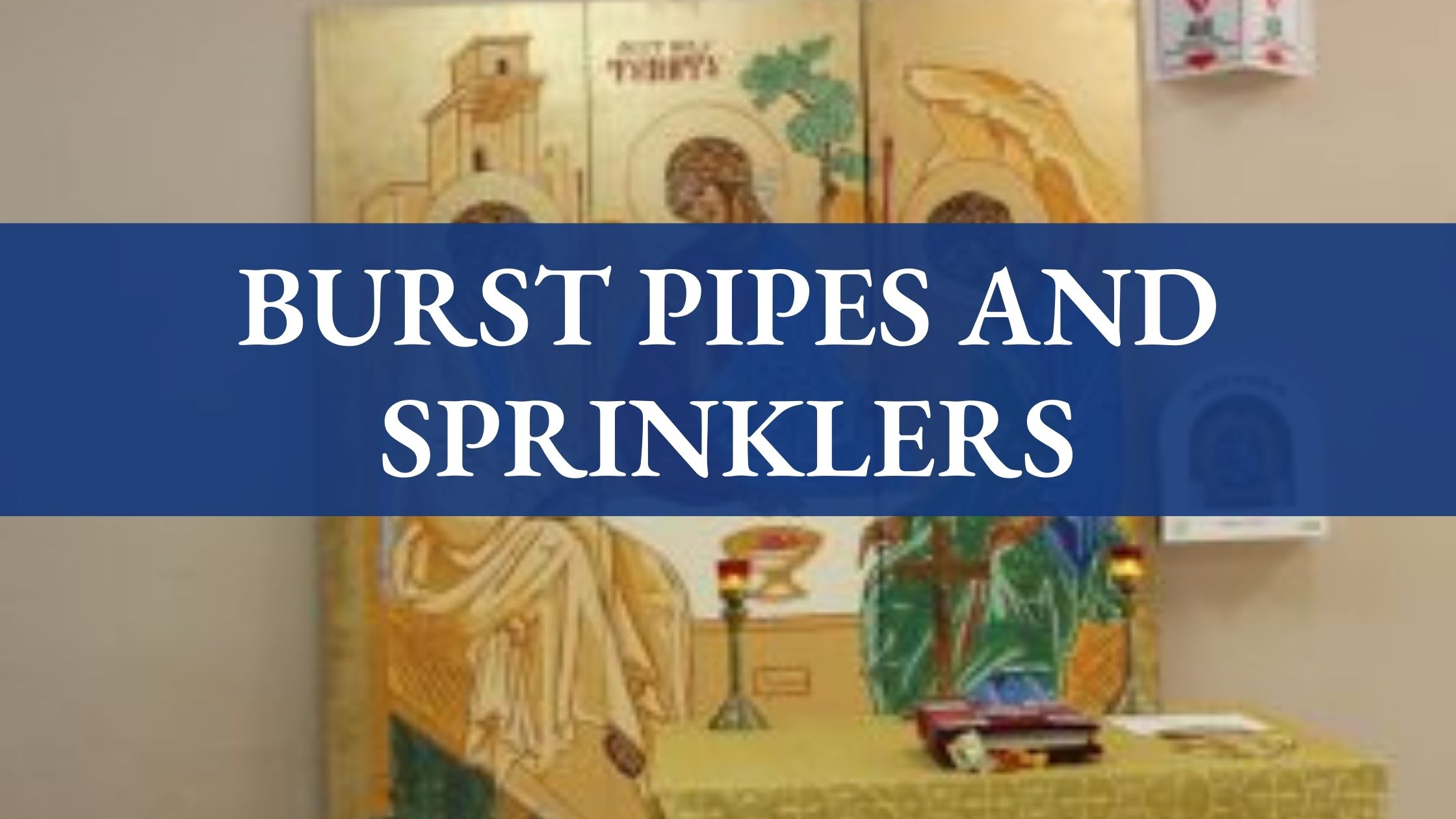
Burst Pipes and Sprinkler Malfunctions
Steps to take should your facility experience a burst pipe or sprinkler malfunction
Burst water pipes and broken fire sprinkler heads can very quickly cause a serious amount of damage and equally serious consequences. Among them:
|
Damages |
Potential Outcomes |
|
Major property damage. |
Disruption to facility and operations. |
|
Damage to valuable belongings, contents, decorative architectural details, etc.… |
Irreplaceable losses. |
|
Unsafe conditions. |
Accidents and personal injuries. |
|
Growth of fungus and mold. |
Various health hazards. |
|
Business interruption. |
Loss of income/Financial instability. |
A Speedy Response is Key to Damage Control and Containment
Mitigating water damage in the most effective way depends on how prepared your organization is and how quickly you can identify and handle the situation. The following are some best practices to consider:
- Establish a set of Emergency Water Shut-Off Procedures and Protocols to deal with a burst water pipe or fire sprinkler system malfunction.
- Develop a training program for designated employees. Select employees who work during different hours/shifts to ensure that your facility can be protected during all hours of operation.
- Provide designated employees with a Site Plan of your building, indicating where the main domestic water supply valve and sprinkler valves are located. Include photos or drawings of valves along with instructions. Mark the locations of the main valve, as well as all shut off valves (on each floor, if applicable) so that they are easy to find. A quick solution is to paint markers or place stickers on the floor and ceiling, and add a hangtag on the main valve.
- Create a ‘Contact Tree’ that includes telephone numbers for your local emergency services.
- At all times, the welfare and safety of your building’s occupants is the first priority. Before shutting any valves off, designated employees must be able to determine if the emergency is an actual fire loss or other life threatening situation.
You can significantly reduce the likelihood of suffering a burst pipe by following some simple steps:
- Make sure the furnace or boiler and heating system are serviced regularly and check that the thermostat is working
- Check the insulation on your water pipes; those in the attic or other vulnerable spaces should be protected.
- Make sure any external taps are turned off and disconnect any hoses during the colder months.
Devices are available which can detect excessive water flow and either send a warning or automatically turn off the water. Leak detection systems which send a warning to a designated person/s enabling them to take appropriate action, are also
available.


